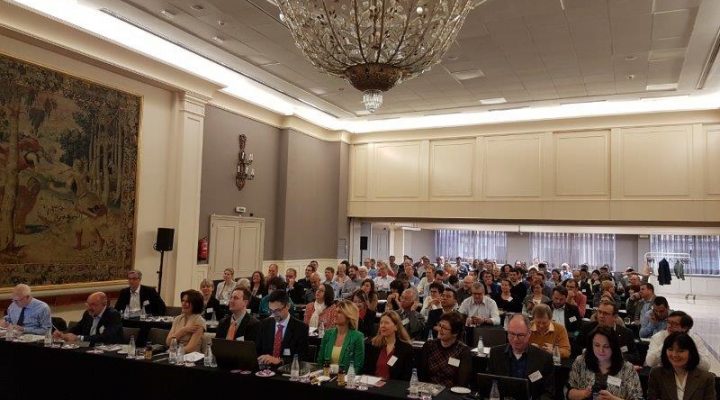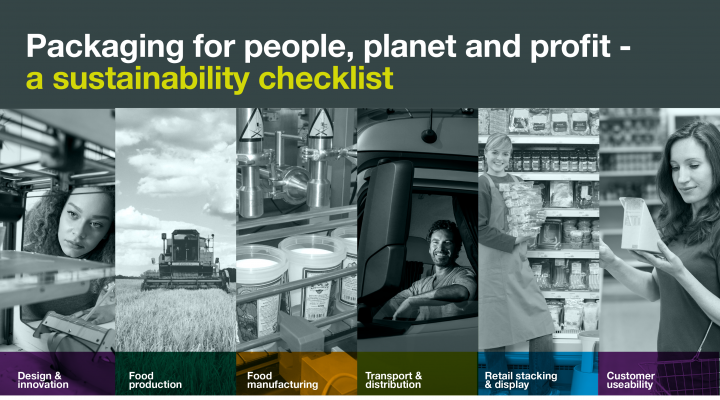The IFU was delighted to share Valencia’s celebrations as FAO (Food and Agricultural Organisation of the United Nations) World Food City 2017 by holding the technical workshop there as part of the official program of events. Located in one of Europe’s largest citrus growing and processing areas it was the perfect location to have a technical tour the day after the workshop to renowned local research centres (IVIA and AINIA) plus the modern orange processing plant, Zuvamesa.
The Astoria Palace was the workshop centre in the heart of the city where the roof top restaurant hosted the networking evening at which a presentation was made by Kees Cools to outgoing Executive Committee member Ebru Akdag for her many years of participation with IFU.
The record number of participants at the workshop and tour were welcomed by the IFU President, Dirk Lansbergen (Citrosuco) who thanked presenters and sponsors GfL, TansOcean and Zumosol .
The workshop
David Berryman (David Berryman Ltd) delivered a lively and energetic first presentation “When the going gets tough”, reminding delegates that whilst the natural sugars in fruit juices are occasionally demonised, sugar is essential for good nutrition, energy and life! In tough market conditions innovation provides the opportunity for growth and product examples demonstrated this.
Genetics
Prof. Jose Mulet (University of Valencia) opened the session on Genetics. It was argued that genetic modification, essential in pharmaceuticals, have an important role to play in future crop development and sustainability. Dr. Manual Talon (IVIA) provided an explanation of genetics and the genealogy of domesticated citrus varieties and how these have and may change in the future.
Processing
The Processing session began with an explanation of ohmic heating by Mario Gozzi (CFT). The benefits of ohmic heating vs. conventional heating were demonstrated with industrial applications. Jose Biot (JBTC) showed delegates that citrus peel from juice processing operations could be recovered and converted in to added value products such as ReadyGoTM d-limonene. Continuing this theme of sustainability from waste stream recovery the presentation from Dr. Carlos Bald (AZTI) covered how other products from citrus peel such as fibre (for baking), feed for aquaculture and bio fermentation processes could be obtained.
Dr. Edgar Zimmer (Bucher Unipektin) presented how resins can be used in the orange juice stream after extraction for the treatment of defects such undesirable flavour characteristics because of HLB greening. Overall, resins can serve a useful function in the control of bitterness, acidity, astringency and stability. The session was concluded with Dr. Bianca May (University of Geisenheim) who demonstrated the influence processing aids (bentonite, activated charcoal and diatomite) may have on heavy metals in certain fruit juices, including apple. The presence of vanadium was also highlighted.
Quality Assurance
Dr. Susanne Koswig (SGF) lead the Quality Assurance session with information on how the international organisation SGF provides quality assurance controls throughout the fruit juice supply chain to ensure only safe and authentic products reach the consumer. The SGF quality assurance programmes are based on audits and analytical controls. Whilst performance in the industry was generally good suppliers and buyers should remain vigilant and examples were provided what to look for. Leading onto more specific analytical testing Mikko Hofsommer (GfL and Chair of the IFU Methods of Analysis Commission) presented how cavity ring-down spectroscopy can play a role in the authenticity control of fruit juices by determining the carbon isotopes of sugar, added pectin in pineapple juice and added acid in lemon juice. The method could provide both repeatable and reproducible results. The risk assessment used by Codex Alimentarius for the determination of pesticide MRL’s is under review and can have a significant impact on pesticide applications on fruit and vegetables with new restrictions. Monika Richter (BASF) explained what the considerations were and how the review was taking place.
Coconut Water
Coconut water has become increasingly popular over the last few years due to its natural intrinsic properties. Whilst it is called a water it is classified as a juice in the Codex fruit juice and nectar standard. Addressing authenticity concerns of some commercially available products Dr. David Hammond (Eurofins) presented the new AIJN code of practice on the coconut water. This details the chemical profile of authentic product.
Microbiology
Barbara Gerten (Merck) then provided an overview on the microbiology of high pH (>4.5) juices including coconut water. There are greater challenges to control the microbiology of these type of products compared to the more prevalent higher ph juices. ACB (alicyclobacillus) was again discussed by Sophie Verdier (The Coca-Cola Company) who provided a review of how this organism can be introduced into the juice stream, how to control it when it is in juice and the spoilage mechanisms that may subsequently occur. The concept of the Ice Gen technology was shown by Annick Casier (Ice Gen). It is used for preparing NFC juices for bulk journeys in non-aseptic conditions by lowering the product temperature prior to loading. This can extend transit times and reduce the risk of microbial spoilage.
Sustainability
The workshop was wrapped up by Piet Haasen (Friesland Campina) and Peter Spaargaren (Doehler) who jointly presented the Sustainable Juice Covenant, which is about putting into action the AIJN Code of Business Conduct and is supported by idh, the sustainable trade initiative. The aim is to achieve sustainable juice by 2030 and the audience was encouraged to offer their support.
Technical tour
First stop was the Agricultural research Centre IVIA, which aims to provide scientific knowledge about agriculture. The site was one of 7 research centres operated including a national reference laboratory on bacteria. The scientific team lead by Manuel Talon talked about their research involving the development and characteristics of new varieties plus their activities on improving crop sustainability such as the biological control of citrus pests and agro engineering. As well as the agricultural side, they also consider post-harvest technologies.
Next stop was the modern citrus processing plant of Zuvamesa. With a fruit processing capacity of 250k MT per annum they produce NFC Orange and Clementine juices which can be stored in their 40m litre aseptic tank farm. In addition to juices they make juice cells and cold pressed oils. The waste stream is utilised for animal nutrition pellets. Zuvamesa very generously provided the group with a tasty lunch with fruit juice.
The tour concluded with AINIA the private not for profit organisation with 270 scientists and technicians providing a range of services to industry such as R&D and research projects, analytical services, training, food legislation, consumer studies and industrial services. The tour included the large facility taking in their various pilot plants and laboratories including supercritical extraction plant, processing, chemical and their dynamic digestion equipment used to simulate the intestinal tract in vitro.
Copies of all the presentations are available from the workshop and can be obtained online at
www.ifu-fruitjuice.com
The 2018 Workshop will be held in Cologne on 19th March.






